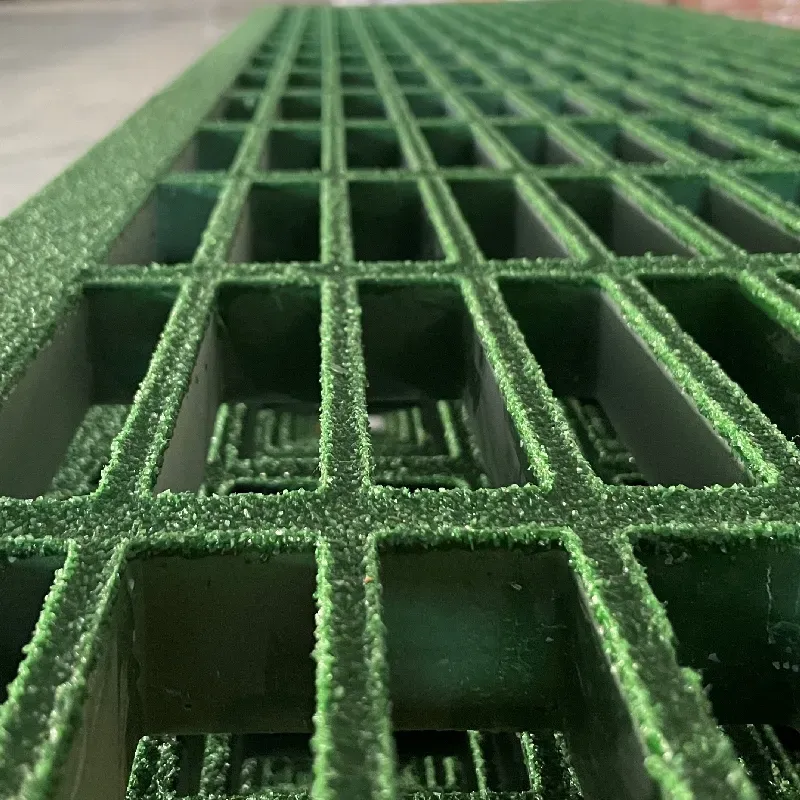loading...
- No. 9, Xingyuan South Street, Dongwaihuan Road, Zaoqiang County, Hengshui, Hebei, China
- admin@zjcomposites.com
- +86 15097380338
- Welcome to visit our website!
Anti-Slip Grating Solutions for Enhanced Safety and Durability in Various Environments
Anti-Slip Grating Enhancing Safety and Performance in Various Environments
In the contemporary pursuit of safety and efficiency, anti-slip grating has emerged as a crucial element in designing walkways, platforms, and other surfaces where traction is paramount. With an array of applications across various industries, from construction to food processing, anti-slip grating plays a vital role in minimizing accidents and enhancing functionality. This article delves into the significance, types, applications, and benefits of anti-slip grating.
Understanding Anti-Slip Grating
Anti-slip grating refers to a safety enhancement applied to walkways and surfaces that are prone to becoming slippery. This can be due to environmental factors such as water, oil, or other materials that could compromise the grip of foot traffic. The purpose of anti-slip grating is to provide a surface that mitigates the risk of slips and falls, which are among the most common workplace accidents.
There are various materials and designs used in the manufacturing of anti-slip grating, with some of the most popular being fiberglass reinforced plastic (FRP), steel, and aluminum. Each material brings unique advantages such as durability, resistance to corrosion, and ease of maintenance.
Types of Anti-Slip Grating
1. Fiberglass Reinforced Plastic (FRP) Grating Lightweight and corrosion-resistant, FRP grating is ideal for environments where chemicals are present. It is particularly favored in the marine and wastewater industries for its longevity and resistance to harsh conditions.
2. Metal Grating Steel and aluminum grating are common in industrial settings. They provide excellent load-bearing capabilities and can be coated with non-slip finishes to enhance safety. Metal grating is often used in factories, warehouses, and outdoor environments.
3. Plastic Grating Though not as robust as metal, plastic grating is cost-effective and lightweight. It is often utilized in residential applications and areas that require ease of installation and maintenance.
Each type is designed with specific applications in mind, ensuring that they meet the safety requirements of various environments.
Applications of Anti-Slip Grating
Anti-slip grating finds applications across numerous sectors
- Industrial Facilities Factories and processing plants often utilize anti-slip grating in machinery areas or walkways to prevent accidents from slips and falls, especially in environments where liquid spills are frequent.
anti slip grating

- Commercial Spaces Retail stores and shopping centers use anti-slip grating in outdoor walkways and ramps. These spaces benefit from reduced liability risks and increased customer safety.
- Transport Infrastructure Airports, train stations, and bus terminals implement anti-slip grating to enhance passenger safety in high-traffic areas where foot traffic can lead to accidents.
- Residential Use Homeowners are increasingly recognizing the importance of anti-slip surfaces in pools, patios, and stairways to protect family and friends from falls.
Benefits of Anti-Slip Grating
The advantages of incorporating anti-slip grating into design and construction are manifold
1. Enhanced Safety The primary benefit of anti-slip grating is its capacity to reduce slips and falls, thereby protecting people in various environments.
2. Durability Many anti-slip grating materials, particularly metal and FRP, are designed to withstand heavy use and adverse conditions, offering long-term performance.
3. Low Maintenance Anti-slip surfaces generally require less maintenance than traditional flooring options, as they are designed to resist corrosion and wear.
4. Versatile Designs Anti-slip grating comes in a variety of styles and colors, allowing for aesthetic integration into existing architecture without compromising safety.
5. Cost-Effectiveness By reducing accidents and their associated costs, anti-slip grating can be a financially sound investment for businesses and property owners alike.
Conclusion
In a world where safety is paramount, anti-slip grating serves as an essential component in a diverse array of applications. Whether in industrial settings, commercial spaces, or residential properties, the implementation of anti-slip grating is a proactive measure that enhances safety and performance. With various materials and designs available, it is essential for decision-makers to choose the right type of grating that meets their specific needs, ensuring a safer environment for all.
-
The Rise of FRP Profiles: Strong, Lightweight, and Built to LastNewsJul.14,2025
-
SMC Panel Tanks: A Modern Water Storage Solution for All EnvironmentsNewsJul.14,2025
-
GRP Grating: A Modern Solution for Safe and Durable Access SystemsNewsJul.14,2025
-
Galvanized Steel Water Tanks: Durable, Reliable, and Ready for UseNewsJul.14,2025
-
FRP Mini Mesh Grating: The Safer, Smarter Flooring SolutionNewsJul.14,2025
-
Exploring FRP Vessels: Durable Solutions for Modern Fluid HandlingNewsJul.14,2025
-
GRP Structures: The Future of Lightweight, High-Performance EngineeringNewsJun.20,2025
